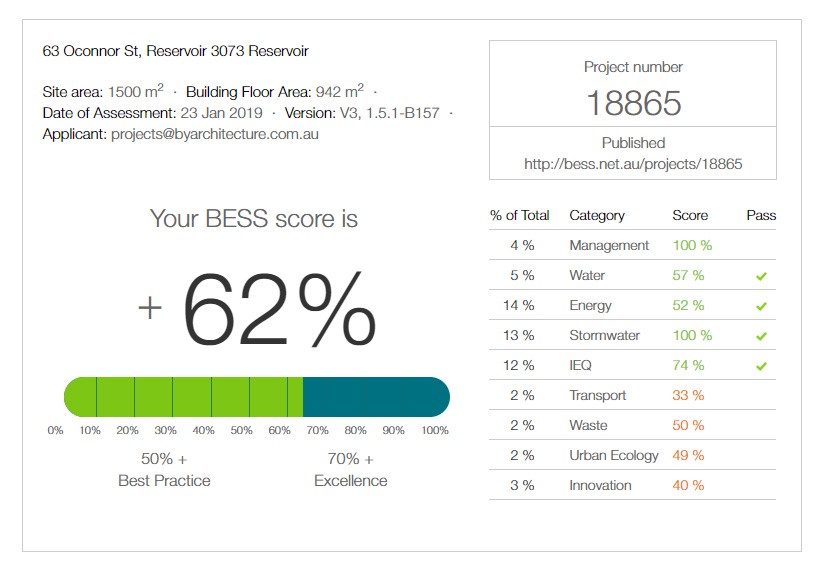
Sustainable Design
During the design process, sustainability is increasingly becoming a key concern for clients, architects, planners and other consultants. But exactly what is sustainability and what’s its relevance to you? In this context, sustainable design can be defined as a design methodology aiming to produce built outcomes facilitating improvements to the natural environment. It’s an exhaustive concept which can be addressed in several ways. For example, water, energy, and materials are all resources where we aim to reduce consumption. Whereas adversely access to green space, public transport, daylight and natural ventilation are factors we want to increase access to.
Sustainable Design Assessment in the Planning Process
This gets a bit technical so bear with me. As a part of a planning permit application, many councils are either requiring or recommending an assessment of how proposals will address sustainability. The Sustainable Design Assessment in the Planning Process (SDAPP) is local governments’ collective response addressing the Victorian Planning and Environment Act of 1987. This is a means of ensuring that new developments comply with sustainability targets in a consistent manner from council to council. Whilst the framework for these assessments was standardised, until recently the methodology of responding to this framework was not. Enter the Bess Report.
BESS Reports
In 2016 the Built Environment Sustainability Scorecard tool was introduced as a simple and standardised approach to produce Sustainable Design Assessments (SDA). The digital tool is essentially an extensive questionnaire requiring design details for a given proposal, if you’re interested in finding out more about exactly what information is required, check out the fact sheet I made here. The result is a report that scores proposals against nine environmental criteria, which in turn contribute to an overall score. You can check out the images below to see how this works.
It’s worth noting that this as this framework aims for improved outcomes, proposals will have to go beyond what is required under the National Construction Code (NCC). For example, the NCC requires maximum indoors lighting wattage of 5W/sqm, whereas to comply with lighting requirements under the BESS system, a maximum indoors lighting of 4W/sqm must be achieved.
There are many consultancies that will provide BESS Reports for a fee, however, the team at BY Projects Architecture is more than comfortable producing these reports in-house. For very large and complex projects we might consider bringing in a third-party consultant.
Bess Environmental Categories: the proposal is ranked against nine categories
Bess Overall Score: the proposal is given a percentage score, with 50% required to pass and 70% corresponding with design excellence!
If you have any questions about sustainability or Bess Reports, please contact us today!
Until next time,
Zeb.





